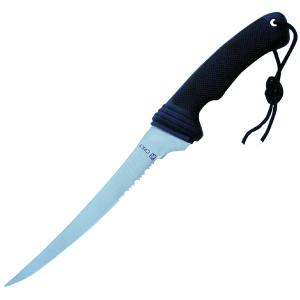 When you catch that beautiful fish that you are excited to stick on the dinner table later that night, you don't want to mess up that beautiful piece of meat when you fillet it just because your knife isn't sharp enough. Here we will talk about how to keep that fillet knife sharp so you will always be able to make the perfect cut of meat.
When you catch that beautiful fish that you are excited to stick on the dinner table later that night, you don't want to mess up that beautiful piece of meat when you fillet it just because your knife isn't sharp enough. Here we will talk about how to keep that fillet knife sharp so you will always be able to make the perfect cut of meat. Getting The Burr
The burr is a wire edge that forms across the blade opposite of what you are sharpening. Your job is not finished until you can see or feel the burr.
The Edge Bevel
Most kitchen knives have a 20-degree edge bevel. For filleting, an edge bevel of 12 to 15 degrees per side provides a clean easy cut and reasonable resistance to dulling. If you don’t cut bone, monofilament or bait with your fillet knife, a 15-degree bevel will be okay for you to use.
Set The Bevel
The easiest way to figure out what angle to set the bevel would be to stack two quarters high. Using this method is not exact, but it gets you pretty close.
To Push or To Pull
We each have those friends who swear by pulling the knife across the stone, and those who swear by pushing. Quite frankly, it doesn't matter. Both ways are just as effective. What does matter, is that the spine moves ahead of the edge. So, just make sure to angle it.
Sharpen
Draw the blade across the stone, sweeping it from heel to tip as you go. Once you have a full-length burr, sharpen to create a burr on the other side. Finish with blade-first strokes, like slicing a sliver from the stone, until the burr disappears.
Now you have the know how to keep that fillet knife just as sharp as when you purchased it. For more tips and pictures to go along, click here.






